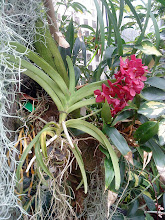 I started writing this post in August - it's now September. Over the summer I've enjoyed seeing gardens, and reading about them, without writing about them. And there have been a few other interesting distractions, mentioned below. But recently friends and colleagues have let me know they've thought of me in gardens this summer: at Kew, Powerscourt and the Vyne. Which has spurred me on to complete this quick round-up - but to start with one that got away . . .
I started writing this post in August - it's now September. Over the summer I've enjoyed seeing gardens, and reading about them, without writing about them. And there have been a few other interesting distractions, mentioned below. But recently friends and colleagues have let me know they've thought of me in gardens this summer: at Kew, Powerscourt and the Vyne. Which has spurred me on to complete this quick round-up - but to start with one that got away . . .
Somehow I've so far missed catching Piet Oudolf's garden at Peter Zumthor's Serpentine Pavilion (open till 16 October). Oudolf's description of planting designed to encourage daydreaming sounded idyllic. But in Munich in August I came across a little square of planting next to the Cafe Luitpold which seemed to me to have a similar effect (top and right). Just a couple of weeks ago, also, a neighbour showed me his garden and, by coincidence, pointed out plants new to his garden which I recognised from the Munich patch.
Other memorable gardens that have come my way: at the Hampton Court flower show, I loved an exhibit of water lilies in a boat surrounded by a seaside garden, which had caug

 ht my eye on Gardeners World because I'd been hoping to see Giverny later in the summer. I was
ht my eye on Gardeners World because I'd been hoping to see Giverny later in the summer. I was  lucky to make it there in time to
lucky to make it there in time to see the Manet exhibition too - a last-minute citybreak.
see the Manet exhibition too - a last-minute citybreak.At Hampton Court I also found myself drawn, as usual, to plants popular with the Elizabethans: lavender, violas, pinks and carnations . On Gardeners World they'd shown the original viola tricolor but we couldn't find it on the
 display; elsewhere in the Plant
display; elsewhere in the Plant  Heritage marquee, the carnations were showy Edwardian varieties, though impressive (click on the photo below to see bizarre candy striped patterns).
Heritage marquee, the carnations were showy Edwardian varieties, though impressive (click on the photo below to see bizarre candy striped patterns).
By chance, around the same time and out of the blue, I heard that Broxbourne Council was about to bid for the second part of a lottery grant to develop Cedars Park, the site of Sir William Cecil's Theobalds Palace: if successful, they could receive up to £1.75 million.
Funding from the Parks for Peoples programme would enable the planting of 2,500 trees, as well as development of the park for the community, better interpretation of the history of Cecil's palace and the re-creation of the maze garden. This summer, as it happens, I've virtually re-visited Elizabethan gardens, working on the U.S. edition of Elizabeth in the Garden (to be published later this year).
But to go back to where I started: this will be the last Gardengoer post for the time being - new website/blog in development; details to be posted here. Meanwhile, happy gardengoing!
Next on my list is a return visit to Sheffield Park, inspired by reading an article by Robert McFarlane on aerial photographs of Polish forests in autumn.











































